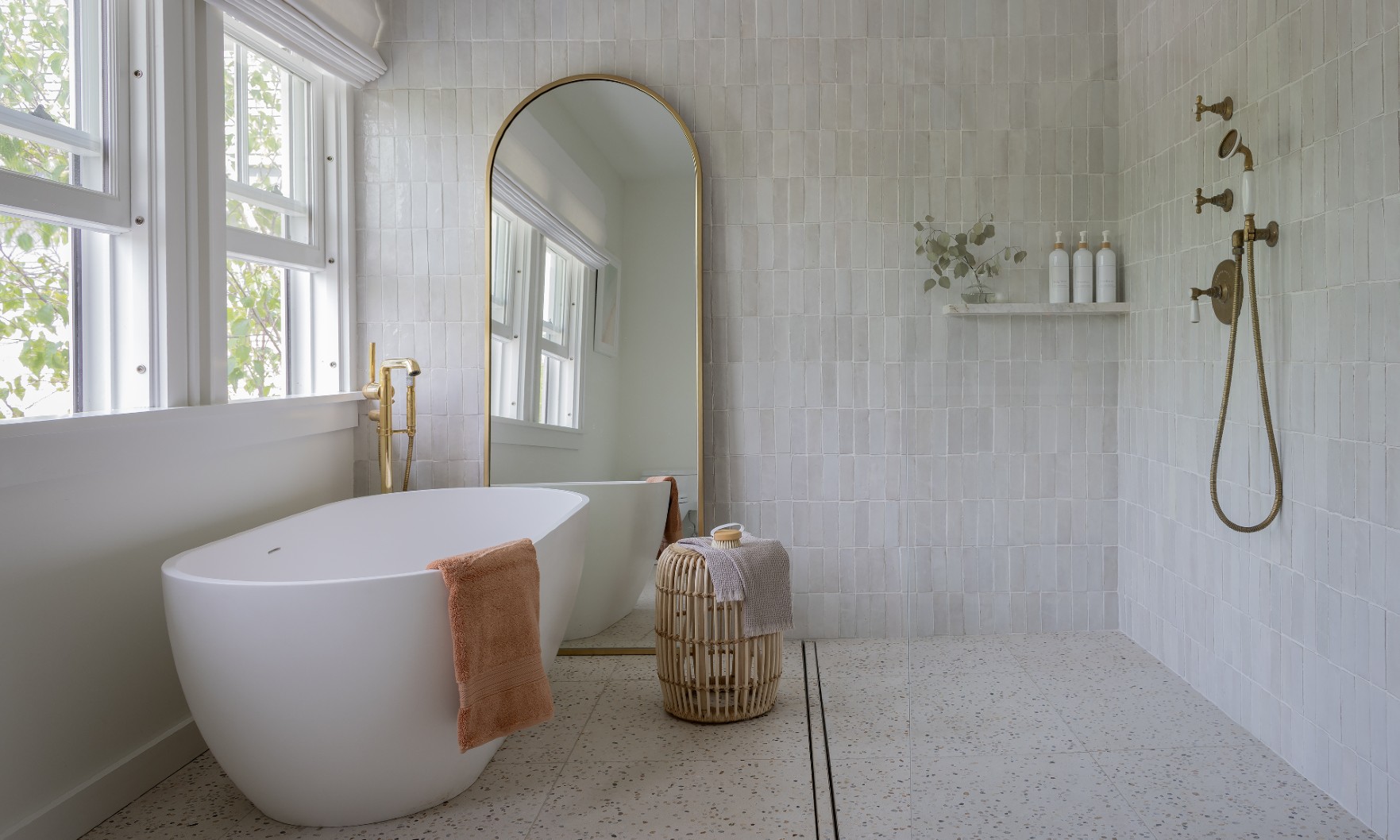A growing number of renovating homeowners now classify their primary bathroom as a “wet room,” according to the 2024 Houzz Bathroom Trends Study. But what exactly is a wet room, and what does the trend say about the way today’s homeowners view their bathroom spaces?
Thirteen percent of renovating homeowners — that’s more than one in eight — opted for the “wet room” aesthetic over a traditional bathroom setup in 2024. That means the entire room, from the doorway to the shower and everything in between, exists in an open floor plan that’s entirely waterproofed. Water can go everywhere in a wet room setup, and there’s often no boundary at all between the shower space and the rest of the room.
Of homeowners who undertook a wet room renovation this year, 66% said they felt it was a better use of space, while 39% liked the accessibility of a universal design that will allow them to age in place (much like the curbless shower trend of 2023). Furthermore, 33% simply liked the wet room style for the aesthetics, while 29% cited a greater ease of cleaning.
Wet rooms are yet another way homeowners are prioritizing their own tastes and preferences over so-called resale value. After all, if you’re planning to live in your home through retirement, it doesn’t matter what potential buyers will think of your bathroom renovations.
In fact, 64% of renovating homeowners were addressing special accommodations in their 2024 bathroom upgrades, with 46% doing so for the future needs of aging household members.
“Consistent with past Houzz research, homeowners are renovating for the long term, making significant investments in functional spaces like primary bathrooms,” Marine Sargsyan, Houzz staff economist, said in a press release. “While changes to layouts, shower area, flooring and plumbing may be unsurprising, what stands out is the growing trend toward future-proofing homes for personal use and the needs of loved ones. That shift has pushed resale value considerations further down the priority list, as homeowners focus on comfort and long-term living.”


